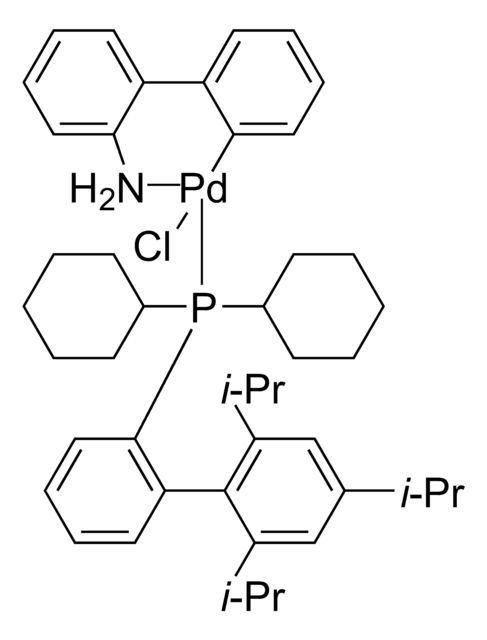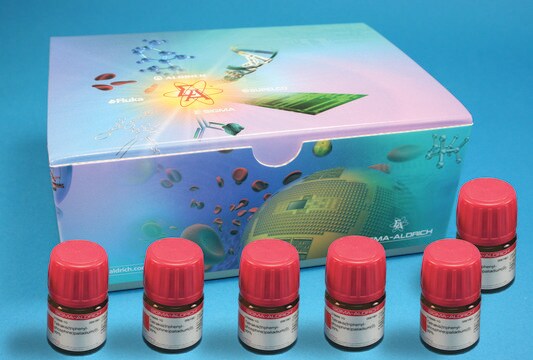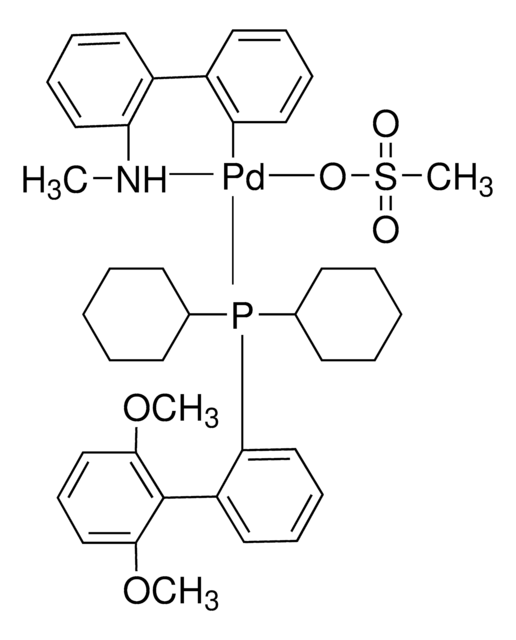707589
(2-Dicyclohexylphosphino-2′,6′-diisopropyl-1,1′-biphenyl)[2-(2-aminoethyl)-phenyl)]-palladium(II)
95%
Synonym(e):
RuPhos-palladium(II)-phenylethylamin-chlorid
About This Item
Empfohlene Produkte
Assay
95%
Form
solid
Leistungsmerkmale
generation 1
Eignung der Reaktion
core: palladium
reaction type: Buchwald-Hartwig Cross Coupling Reaction
reaction type: Heck Reaction
reaction type: Hiyama Coupling
reaction type: Negishi Coupling
reaction type: Sonogashira Coupling
reaction type: Stille Coupling
reaction type: Suzuki-Miyaura Coupling
reagent type: catalyst
reaction type: Cross Couplings
mp (Schmelzpunkt)
180-200 °C
Funktionelle Gruppe
phosphine
SMILES String
COC(C)(C)C.NCCc1ccccc1[Pd]Cl.CC(C)Oc2cccc(OC(C)C)c2-c3ccccc3P(C4CCCCC4)C5CCCCC5
InChI
1S/C30H43O2P.C8H10N.C5H12O.ClH.Pd/c1-22(2)31-27-19-13-20-28(32-23(3)4)30(27)26-18-11-12-21-29(26)33(24-14-7-5-8-15-24)25-16-9-6-10-17-25;9-7-6-8-4-2-1-3-5-8;1-5(2,3)6-4;;/h11-13,18-25H,5-10,14-17H2,1-4H3;1-4H,6-7,9H2;1-4H3;1H;/q;;;;+1/p-1
InChIKey
OMMPYFRVDWZBNR-UHFFFAOYSA-M
Anwendung
Rechtliche Hinweise
Signalwort
Danger
H-Sätze
Gefahreneinstufungen
Skin Corr. 1B - STOT SE 3
Zielorgane
Respiratory system
Lagerklassenschlüssel
8A - Combustible corrosive hazardous materials
WGK
WGK 3
Persönliche Schutzausrüstung
dust mask type N95 (US), Eyeshields, Gloves
Analysenzertifikate (COA)
Suchen Sie nach Analysenzertifikate (COA), indem Sie die Lot-/Chargennummer des Produkts eingeben. Lot- und Chargennummern sind auf dem Produktetikett hinter den Wörtern ‘Lot’ oder ‘Batch’ (Lot oder Charge) zu finden.
Besitzen Sie dieses Produkt bereits?
In der Dokumentenbibliothek finden Sie die Dokumentation zu den Produkten, die Sie kürzlich erworben haben.
Kunden haben sich ebenfalls angesehen
Unser Team von Wissenschaftlern verfügt über Erfahrung in allen Forschungsbereichen einschließlich Life Science, Materialwissenschaften, chemischer Synthese, Chromatographie, Analytik und vielen mehr..
Setzen Sie sich mit dem technischen Dienst in Verbindung.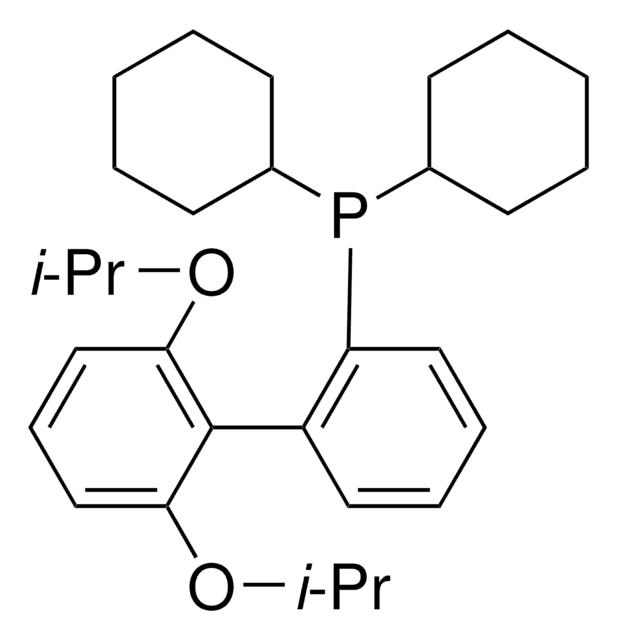


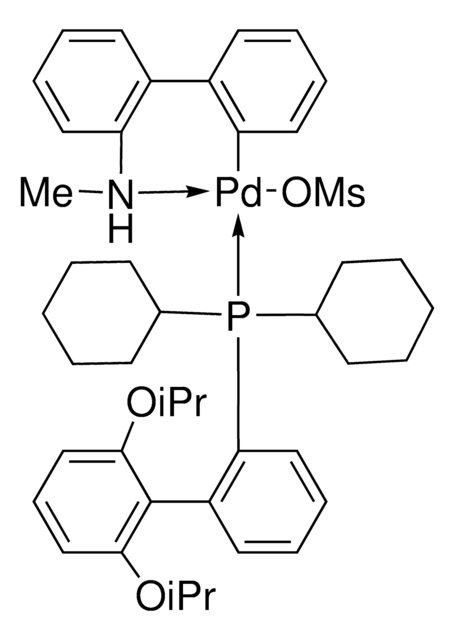

![Chloro-[2-(dicyclohexylphosphino)-3,6-dimethoxy-2′,4′, 6′-triisopropyl-1,1′-biphenyl][2-(2-aminoethyl)-phenyl]-palladium(II) may contain up to 1 mole equivalent of MTBE, 97%](/deepweb/assets/sigmaaldrich/product/structures/196/487/3708dace-6e45-4cbc-94d6-796bcb73e608/640/3708dace-6e45-4cbc-94d6-796bcb73e608.png)



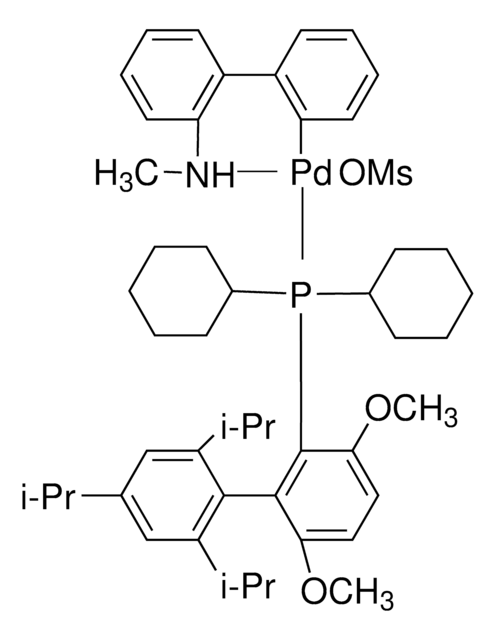


![Chloro-[2-(di-tert.-butylphosphino)-2′,4′,6′-triisopropyl-1,1′-biphenyl][2-(2-aminoethyl)-phenyl)]-palladium(II)](/deepweb/assets/sigmaaldrich/product/structures/374/747/a358fdcf-b761-45ff-b990-2e963471123d/640/a358fdcf-b761-45ff-b990-2e963471123d.png)
